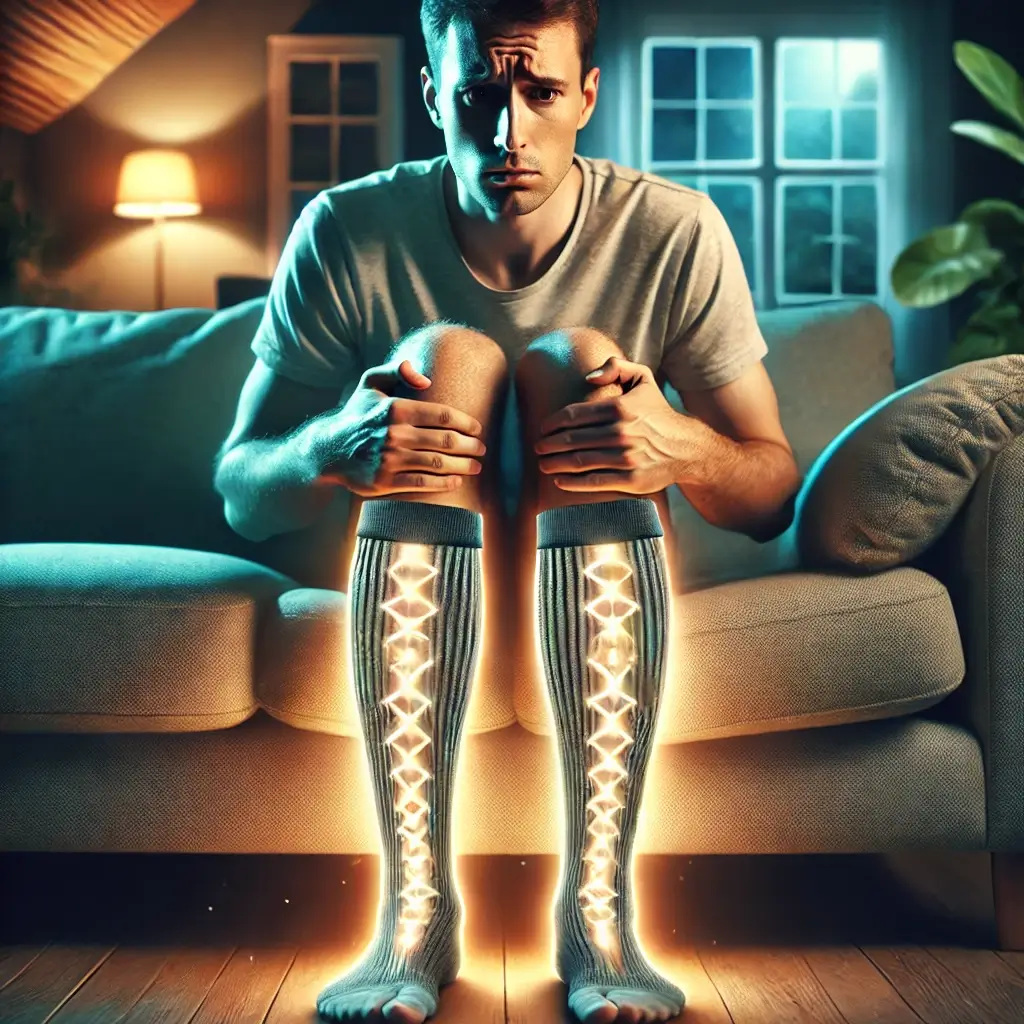Understanding Restless Legs Syndrome and Its Impact
Restless Legs Syndrome (RLS) is a neurological disorder that affects up to 10% of the population globally, with symptoms ranging from mild discomfort to severe disruptions in daily life. RLS is characterized by an intense urge to move the legs, often accompanied by unpleasant sensations like tingling, itching, or a “crawling” feeling. These symptoms worsen at rest or during the evening, significantly affecting sleep quality. Left untreated, RLS can lead to chronic sleep deprivation, heightened stress levels, and even increased risks of cardiovascular issues.
Traditional Treatments and Alternative Options
Traditional treatments for RLS often rely on medications, including dopaminergic agents or anticonvulsants. While effective for some, these treatments can have side effects and are not universally successful. As a result, patients and researchers alike are exploring non-pharmacological options for relief. Compression sleeves, commonly used to improve circulation and reduce muscle fatigue, have emerged as a potential alternative. This article delves into the evidence surrounding compression therapy for RLS, practical considerations for its use, and complementary management strategies.
Evidence Supporting Compression Sleeves for RLS
Sleep disruption is one of the most challenging aspects of RLS. A 2018 study in Sleep and Breathing found that compression stockings significantly improved sleep quality in RLS patients. Participants experienced fewer nighttime symptoms and reported feeling more rested upon waking. Researchers attributed these improvements to the consistent application of moderate pressure on the lower limbs, which appears to mitigate the sensory disturbances caused by RLS.
Enhanced Blood Flow Benefits
RLS is believed to involve abnormalities in blood flow and neural signaling. A study published in The Journal of Clinical Sleep Medicine (2013) demonstrated that compression garments improve venous return and oxygen delivery to the muscles. Enhanced circulation may alleviate some of the discomfort associated with RLS, though further research is needed to fully understand this mechanism.
Tactile Stimulation Benefits
The gentle pressure applied by compression sleeves offers a form of tactile stimulation that can help distract the nervous system from unpleasant sensations. This sensory input is particularly beneficial during periods of rest, when RLS symptoms are typically most pronounced. Anecdotal evidence and patient reports further support the therapeutic potential of compression therapy as a calming intervention for nighttime relief.
Practical Guidelines for Compression Sleeve Usage
To maximize the benefits of compression therapy, it is essential to select the right product and use it correctly: Choose the Correct Compression Level: Opt for moderate compression (15-20 mmHg) unless otherwise advised by a healthcare professional. Material and Fit: Look for breathable, stretchable materials that maintain comfort without compromising pressure. Poorly fitted sleeves can exacerbate discomfort. Use During Rest Periods: Wear compression sleeves in the evening or overnight when RLS symptoms are most severe.
Comprehensive Management Approaches
While compression sleeves can be a valuable tool, a holistic approach is essential for long-term symptom management. Consider these strategies: Prioritize Sleep Hygiene: Maintain consistent sleep and wake times to regulate your circadian rhythm. Avoid screen time an hour before bed. Dietary Adjustments: Reduce caffeine, nicotine, and alcohol intake, all of which can worsen RLS symptoms. Exercise Regularly: Moderate daily exercise improves overall circulation and may decrease symptom severity. Avoid vigorous workouts close to bedtime. Stress Management: Techniques like yoga, mindfulness, and progressive muscle relaxation can reduce stress levels, a known RLS trigger. Consult a Specialist: If symptoms persist or worsen, work with a healthcare provider to explore medical treatments or alternative therapies.
Final Thoughts on RLS Management
Restless Legs Syndrome is a challenging condition that disrupts not only sleep but also overall well-being. Compression sleeves offer a promising, non-invasive option for alleviating nighttime symptoms. Supported by evidence suggesting improvements in sleep quality and circulation, these garments are an accessible addition to RLS management plans. However, they should be used as part of a comprehensive strategy that includes lifestyle modifications, stress reduction, and professional medical guidance. With the right tools and approaches, RLS sufferers can find relief and reclaim restful nights.
Research References
Gilaberte, R., Garcia-Borreguero, A., Montserrat, J. M., Ruiz, J. R., & Ochoa, E. (2018). Effectiveness of compression stockings for sleep improvement in restless legs syndrome. Sleep and Breathing, 22(3), 695–701.
Allen, R. P., & Picconi, P. M. (2013). Restless legs syndrome and periodic leg movement disorder in sleep. The Journal of Clinical Sleep Medicine, 9(11), 1217–1231.
